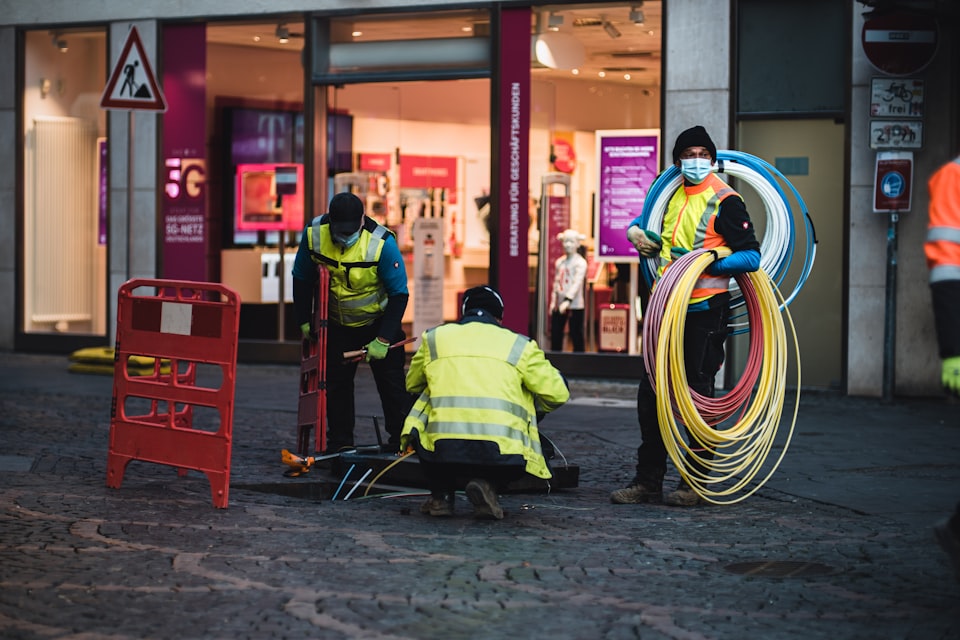VDSL doesn't get the love it deserves

Everyone knows fibre is the best way to get broadband. It’s reliable and can deliver gigabit speeds. Soon it will be able to go even faster.
After 100 years on top, copper is on the way out for most people. But not for everyone. At least not yet.
There is still life in copper broadband. Scientists and engineers have squeezed every last electron of performance from wire-based data transfer to the point where, with the right conditions, copper can deliver fibre-like speeds.
For the most part, the right conditions means living no more than about 1.5 kilometres from a roadside cabinet or exchange.
VDSL interim until fibre arrives
This is good news because the second phase of New Zealand’s government supported UltraFast Broadband roll-out will not be complete until 2022.
People in areas at the back of the queue will have to make do with copper broadband for now. Fixed wireless broadband is also an option.
Those people in areas not yet scheduled for fibre will wait still longer. Eventually fibre will reach beyond 87 percent of the population, but not soon enough to keep everyone happy.
Chorus, Nokia crank up VDSL speeds
Relief is on the way. Chorus and Nokia are working on the latest version of VDSL2 vectoring which could see copper broadband users get speeds as high as 130 Mbps.
Vectoring uses noise-cancelling technology to remove the crosstalk interference found when many signals share the same copper connection. If that sounds too technical a description, focus on this: Vectoring means higher speed.
You’ll need to be close to a cabinet to get maximum speed. The further you are from the cabinet the slower it gets.
Existing VDSL2 users living next to a cabinet should see speeds of around 80 mbps. One kilometre away from the cabinet the speed drops to around 25 to 30 mbps. By the time you are two kilometres away, the speed is down to around 20 mbps, maybe a fraction lower.
The ratios are likely to be similar when vectoring is applied. So expect around 130 mbps near the cabinet and roughly 30 mbps two kilometres away.
Fibre-like speeds
This isn’t bad. When fibre first went on sale in New Zealand customers were offered 30 mbps plans.
To put the speed in context, Netflix recommends 5 mbps for HD television streaming and 25 mbps for ultra high-definition.
In other words, get ready to enjoy Spark’s streaming coverage of next year’s Rugby World Cup or Premier League football. If that’s not your thing, there are plenty of other streaming TV options.
VDSL fine in practice
Until recently I was getting around 50 to 60 mbps on a non-upgraded VDSL2 copper connection. I live around 700 metres from the nearest cabinet. This gives you some idea of the potential.
Chorus head of Network Technology Martin Sharrock says getting the fastest possible broadband experience to customers is a priority.
He says: “Vectoring has improved average VDSL downstream speeds by over 40 percent and upstream speeds by over 30 percent. This is especially important for rural New Zealand where fibre to the home has not yet been planned.”
Federico Guillén, president of Nokia Fixed Networks, said: “Nokia’s copper solution with vectoring technology compliments Chorus’ fibre roll-out and provides another way to deliver significantly higher speeds that enhance the way customers experience digital content.”
And then there is wireless
As mentioned earlier, fixed wireless broadband is an option for people in areas not served by fibre. Some wireless towers are full, they’re not open to accept more customers. This is the case in my Auckland suburb where fibre is an option.
While fixed wireless broadband can, in theory, deliver speeds faster than VDSL with vectoring to people further away from a cabinet, the speed tends to vary depending on how many others are using the same bandwidth at the same time. It will probably slow down at peak TV viewing times.
If you’re not on fibre, it’s worth investigating both technologies. You can find out if a copper VDSL2 connection is available at your address from the Chorus broadband checker. To get a bigger picture of all your broadband options use InternetNZ’s excellent National Broadband Map.
Member discussion